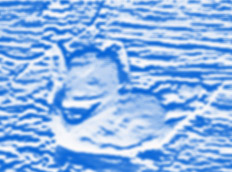The City Naturalist
An Introduction to The City Naturalist
The City Naturalist is a nature guide to Central Park, Riverside Park, and the lower Hudson estuary. It helps you discover the animals and plants that can be seen in and around New York City's parks and rivers, rooftops, and skies.
This guide has been compiled by Leslie Day, an environmental educator, an avid nature lover, and a long-term resident of the 79th Street Boat Basin.



The Upper West Side, nestled between Central Park with its woods, meadows, and the many bodies of freshwater that make up its wetlands, and Riverside Park which runs alongside the Hudson River, offers particularly rich and diverse habitats for native and exotic species of plants and animals. Throughout the seasons there are places to go to see birds, insects, amphibians, fish, reptiles, mammals and the trees and wild flowers that abound in the still natural places of the Upper West Side that can be found in our parks. By knowing where to look, how to look and what to look for, the parks you have walked through for years on your way to work, or to attend Little League games, will be transformed by seeing a Red tailed hawk soaring overhead, or a Black crowned night heron fishing in the Hudson or in the lakes of Central Park, or the spring flowering of our deciduous trees, such as the Basswood.
The City Naturalist, through photographs and textual biographies will teach you about the plants and animals that live year round or, in the case of birds, migrate to or over the Upper West Side.
Why study nature in the city?
When you study plants and animals, you enter into their world, which in Central Park and Riverside Park, is beautiful, peaceful, and exciting. When you look closely, your senses are heightened. You learn how to look and listen and take in information through your senses. This is what children do and what, as adults, makes us feel alive and "in touch with our surroundings. The study of the natural world helps us become in touch with ourselves: our skills and abilities and our humanity.
Once you learn to love learning about plants and animals by observing them in the field, you start to care more and more for their "homes" or habitats: their woods, hillsides, ponds, streams, rivers and lakes. You begin to realize that if that particular lake becomes polluted, the waterfowl that depend on returning to it each spring in order to nest, raise their young, and feed, will stop coming. You start to realize that if the trees on that hillside die and are not replaced, the songbirds that nest in them and use them for protection, will no longer be able to return. You start to value in new ways the wonderful and historic Central Park and Riverside Park that we New Yorkers have been fortunate enough to have for over a century. And once you start to value our parks as a home for birds and other animals, and the plants these animals depend on, you develop a sense of "stewardship" which leads to an environmental awareness that results in your becoming an advocate and protector of our parks.
Observing Birds in NYC | Azalea Pond
About Leslie Day | For Further Information
Copyright © 1996-2012 The 79th Street Boat Basin Flora and Fauna Society.
